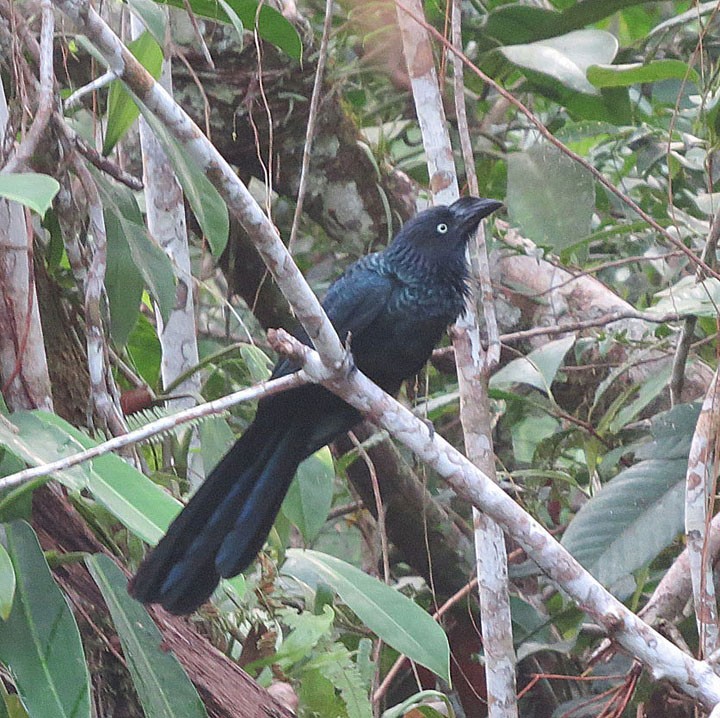Greater Ani
A species of Anis Scientific name : Crotophaga major Genus : Anis
Greater Ani, A species of Anis
Botanical name: Crotophaga major
Genus: Anis
Content
Description General Info
Description
The greater ani (Crotophaga major) is a large bird in the cuckoo family. It is a breeding species from Panama and Trinidad through tropical South America to northern Argentina. It is sometimes referred to as the black cuckoo. This ani is found in mangrove swamps, semi-open woodland near water, and the edges of forests. It is a seasonal migrant in at least some parts of its range. The nest, built communally by several pairs, is a deep cup lined with leaves and placed usually 2–5 m (6.6–16.4 ft) high in a tree. A number of females lay their chalky deep blue eggs in the nest and then share incubation and feeding. These breeding groups may also include non-breeding helpers. Nests have been found containing 3–10 eggs. In a recent longterm study, it was found that around 15% of females lay their eggs in the nest of another nesting group. This conspecific brood parasitism happens primarily when a female has lost her own clutch to predation. The greater ani is about 48 cm (19 in) long and weighs 170 g (6.0 oz). The adult is mainly blue-glossed black, with a long tail, massive ridged black bill, and a white iris. Immature birds have a dark iris. This is a very gregarious species, always found in noisy groups. The calls include croaking and turkey-like gobbling kro-koro. The greater ani feeds on large insects and even lizards and frogs. 
Size
46 cm
Life Expectancy
4 years
Nest Placement
Tree
Feeding Habits
Greater Ani predominantly consume large insects like grasshoppers and beetles, along with fruit, seeds, and occasionally small reptiles and amphibians. They typically forage by sifting through vegetation or picking off prey from surfaces, showcasing adaptability in their feeding behaviors.
Habitat
Greater Ani predominantly resides in forested lowlands near standing or slow-moving waters, such as rivers, lakes, and swamps. Its favored habitats are characterized by dense vegetation, including bamboo groves, mangroves, flooded and gallery forests. Often found close to water edges, greater Ani utilizes marshes and lake shores for nesting, avoiding areas with strong winds or swift currents, yet displaying some adaptability to human presence.
Dite type
Omnivorous
General Info
Feeding Habits
Bird food type
Species Status
Not globally threatened.
Scientific Classification
Phylum
Chordates Class
Birds Order
Cuckoos and Relatives Family
Cuckoos Genus
Anis Species
Greater Ani 